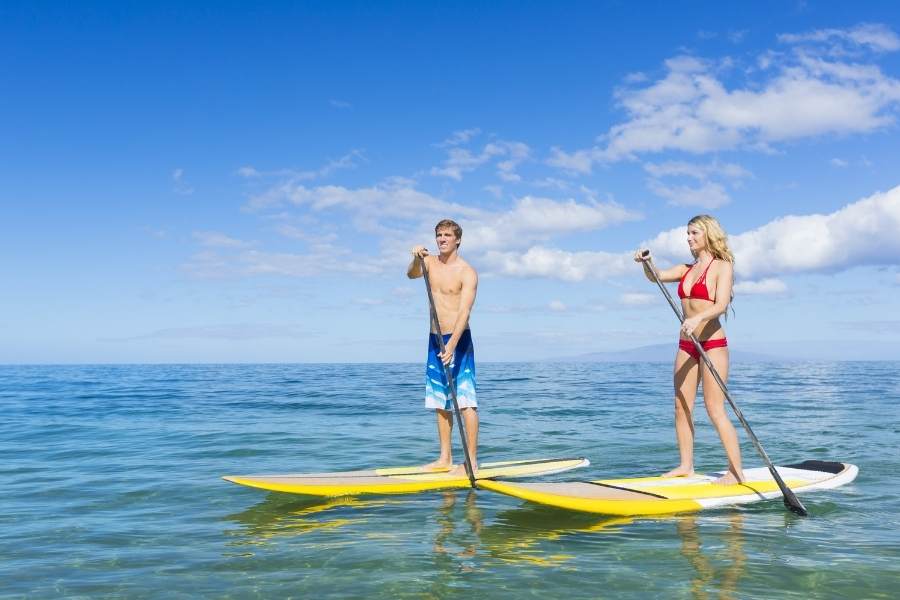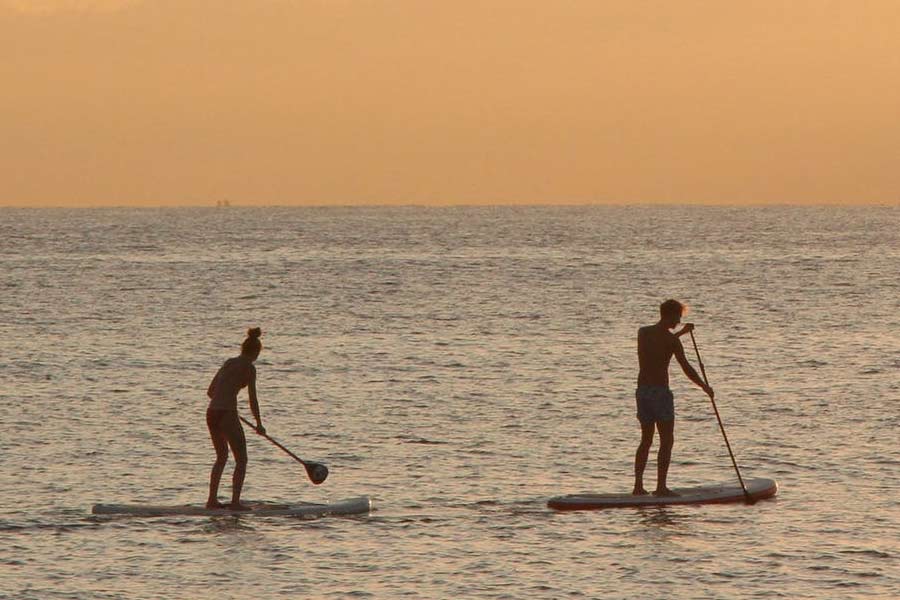Are you a fan of water sports? Have you been looking for a fun activity to enjoy with friends or relatives on your next holiday trip? If yes, then paddle boarding might just hit the spot. Not only does it provide a well-rounded core workout, but paddle boarding can also be practiced on oceans, lakes, or rivers, allowing you to soak in the majestic beauty of the great outdoors. This beginner-friendly guide will walk you through some important considerations for a memorable first paddle boarding experience.
1. A Beloved Discipline
Also known as stand-up paddle boarding (SUP), paddle boarding has been gaining immense popularity for the better part of a decade. It’s a great activity you can do on virtually any body of water, regardless of your age, body type, or athletic skills. People who love to paddle board claim it grants them the freedom to explore the waters leisurely while getting a nice physical and mental workout.
So, if you love the water but aren’t the greatest swimmer or surfer, paddle boarding can be the perfect compromise between relaxation and effort. Speaking of, you can even look into yoga paddle boarding.
2. Choosing the Right Board
The surest way to enjoy your first paddling experience is to pick the right board. Modern paddle boards come in a variety of shapes, sizes, and materials. While the most common type is the epoxy (or hard) paddle board, other options have also hit the market, like the hugely popular inflatable board.
In terms of measurements, beginners will want a board that’s wider, longer, and thicker for optimal stability. If you’re wondering what the best paddle boards for beginners to purchase this summer are, there are plenty of comparative guides out there to help steer your choice of SUP gear. Ultimately, it’s in your best interest to conduct enough research to find the perfect equipment for your needs.
3. Paddle Boarding Equipment
As it happens, you’ll need some other equipment pieces before you can start stroking away gracefully into the sunset and enjoy the many benefits of paddle boarding. For starters, get your hands on a solid paddle. It consists of a handle, blade, and shaft generally made of plastic, wood, aluminum, or carbon fiber.
The paddle should be roughly 6-10in (15-25cm) taller than you depending on your morphology and height. Next, to prevent your board from being swept away in case you fall off, equip yourself with a SUP leash that you’ll attach around your ankle with a strap. In parallel, board bags will facilitate transportation and storage, and paddle board life vests will offer added safety.
4. Sizing Your Paddle Correctly
Not every paddle type or size will fit every enthusiast. Using a properly sized paddle will allow you to enjoy a smooth paddling experience and help you leverage the full power of your strokes for better maneuverability. Your ideal paddle length depends on how tall you are, your arm length, the board’s height, and whether you’re doing it recreationally or for surfing.
5. Standing Up on Your Board
Stability and balance are requisites in many water sports, and paddle boarding most of all. With that in mind, here’s the proper technique to stand up on your paddle board:
- Get your board out on flat, calm water ideally. It should be neither deep nor shallow.
- Hop on and get into a kneeling position. Stabilize yourself and hit a few strokes.
- Grabbing your paddle with your arms stretched in front of you, lean forward, and press with your knuckles down into the board.
- Use that counterweight leverage to slowly stand on one foot, then the other, keeping your knees slightly bent and your gravity center low for balance.
- Fix a point on the horizon to help you stay focused and find a stable posture.
Once you’re able to not fall off your board every thirty seconds, the basic paddling techniques will come to you naturally with some practice. If you already have an excellent balance, chances are you’ll get the hang of it in no time.
6. Common Paddle Boarding Mistakes to Avoid
- Paddling without a leash – This is basically learning to ride a bike without a helmet.
- Assuming a surfing stance – While it may look cool, a surfer’s posture isn’t how you stand on a paddle board. Stand with your feet shoulder-width apart and your knees slightly bent, focus on the horizon, and engage your core all the way.
- Only using your arms – Don’t simply rely on your arms. Solicit your back muscles to support your stance and arm and shoulder motions to keep you going.
- Not checking wind direction – Unless you want to find yourself blown miles away from the nearest shore, factor in the wind’s natural direction to paddle against it and stay safely on course.
- Taking an excessive risk – While you may be tempted to ride those big ocean waves, you’re better off mastering the basics before you can star in the next paddle boarding remake of Point Break.

Ultimately, paddling boarding is a super exciting and fulfilling activity anyone can take up. Whether you’re heading lakeside for the weekend or taking your loved one to Turks and Caicos, experiencing the joys of paddle boarding for the first time is guaranteed to redefine your relationship with water sports at large. So what are you waiting for? Paddle away!















You must be logged in to post a comment.